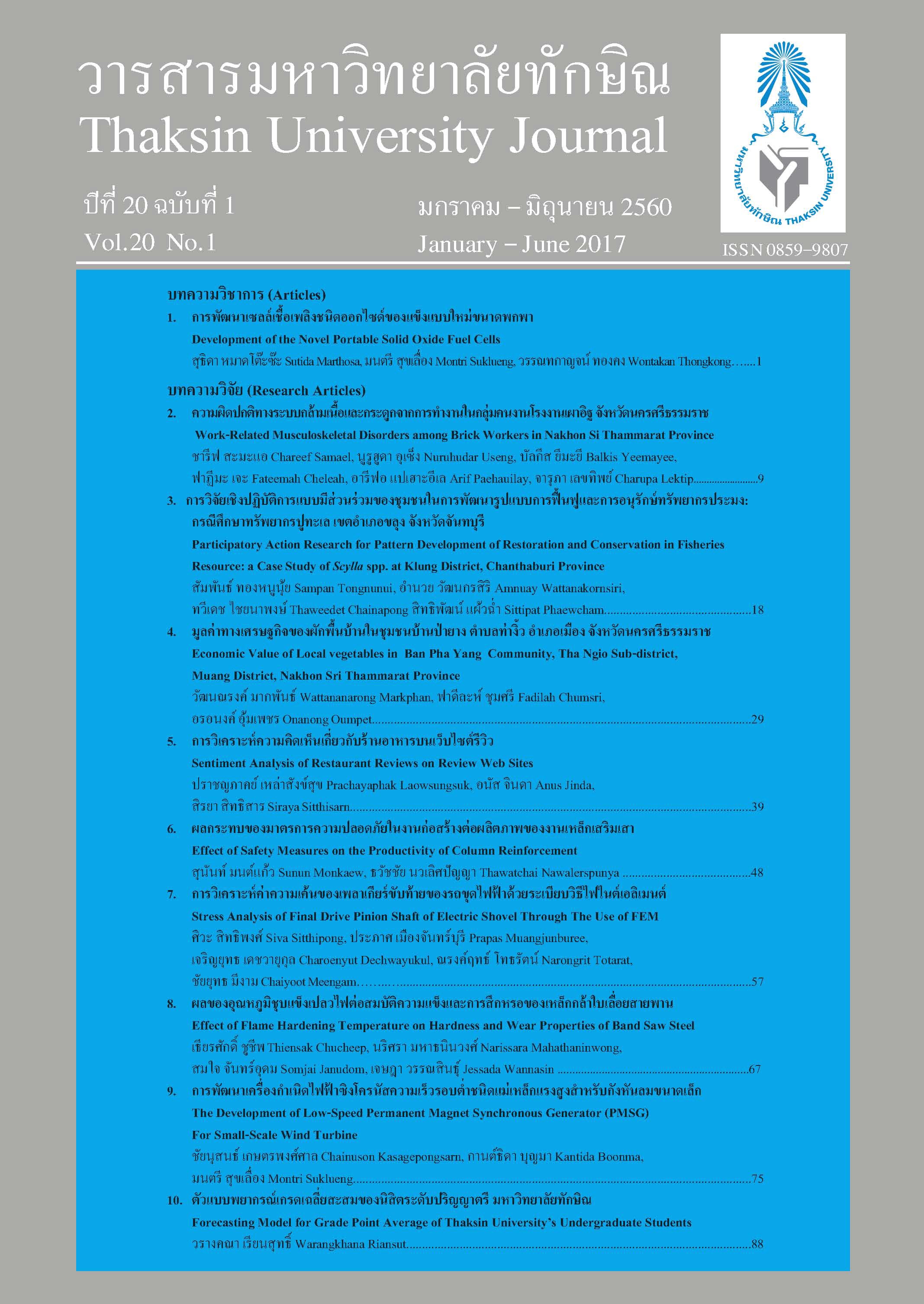Effect of Flame Hardening Temperature on Hardness and Wear Properties of Band Saw Steel
Main Article Content
Abstract
The objective of this work is to study the effect of quenching temperature on hardness and wear properties of rubber wood band saw steel by flame hardening. Acetylene-oxygen gases were used in the flame hardening process. Samples were heated to five maximum surface temperatures of 773, 860, 876, 947 and 984 degree Celsius, and quenched in water. After flame hardening process, all samples were analyzed in terms of microstructure, hardness and wear resistance. The results of microstructure, hardness and wear of the flame hardening samples showed that microstructures were transformed to martensite, hardness values increased and wear decreased at the maximum surface temperatures above an austenite temperature. At the maximum surface temperatures of 773 and 860 degree Celsius, the sample hardness values were not different. Wear of as received sample was higher than that of flame hardening samples at maximum surface temperatures of 773 and 860 degree Celsius. Samples were flamed at maximum surface temperatures of 876, 947 and 984 degree Celsius leading the formation of cracks after quenching.


